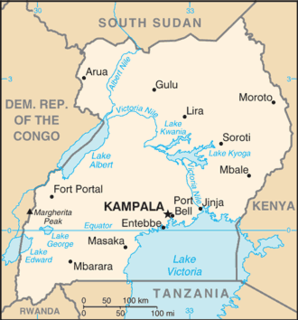 W
WAdolescence is a transitional stage of physical and psychological development that generally occurs during the period from puberty to legal adulthood. Adolescence is usually associated with the teenage years, but its physical, psychological or cultural expressions may begin earlier and end later. For example, puberty now typically begins during preadolescence, particularly in females. Physical growth and cognitive development can extend into the early twenties. Thus, age provides only a rough marker of adolescence, and scholars have found it difficult to agree upon a precise definition of adolescence.
 W
WAdaptive mentalization-based integrative treatment (AMBIT) is a novel adaptation of the theory of mentalization and practices of mentalization-based treatment to address the needs of chaotic, complex and multiply comorbid youth, via team-based multimodal practices.
 W
WAdolescence is a transitional stage of physical and psychological development that generally occurs during the period from puberty to legal adulthood. Adolescence is usually associated with the teenage years, but its physical, psychological or cultural expressions may begin earlier and end later. For example, puberty now typically begins during preadolescence, particularly in females. Physical growth and cognitive development can extend into the early twenties. Thus, age provides only a rough marker of adolescence, and scholars have found it difficult to agree upon a precise definition of adolescence.
 W
WBJ Casey is an American psychologist who is a Professor of Psychology and Affiliated Professor of the Justice Collaboratory and Interdepartmental Neuroscience Program at Yale University where she directs the Fundamentals of the Adolescent Brain (FAB) Lab.
 W
WComing of age is a young person's transition from being a child to being an adult. It continues through adolescence. The specific age at which this transition takes place varies between societies, as does the nature of the change. It can be a simple legal convention or can be part of a ritual or spiritual event, as practiced by many societies. In the past, and in some societies today, such a change is associated with the age of sexual maturity (puberty), especially menarche and spermarche. In others, it is associated with an age of religious responsibility. Particularly in western societies, modern legal conventions which stipulate points in late adolescence or early adulthood are the focus of the transition. In either case, many cultures retain ceremonies to confirm the coming of age, and coming-of-age stories are a well established sub genre in literature, film industry and even comics.
 W
WWorldwide, there are between 180 and 220 million youth with disabilities. Eighty percent of disabled youth live in developing countries, and therefore have even less access to education, health care, jobs and general rights Disabilities include physical, mental disabilities or mental illness. Many youth live normal and stable lives, however those with disabilities may experience more obstacles than those without due to potential limitations, those created by physical limitations and social limitations.
 W
WEphebophilia is the primary sexual interest in mid-to-late adolescents, generally ages 15 to 19. The term was originally used in the late 19th to mid 20th century. It is one of a number of sexual preferences across age groups subsumed under the technical term chronophilia. Ephebophilia strictly denotes the preference for mid-to-late adolescent sexual partners, not the mere presence of some level of sexual attraction. It is not a psychiatric diagnosis.
 W
WA military brat is the child of serving or retired military personnel. Military brats are associated with a unique subculture and cultural identity. A military brat's childhood or adolescent life may be immersed in military culture to the point where the mainstream culture of their home country may seem foreign or peripheral. In many countries where there are military brat subcultures, the child's family moves great distances from one non-combat assignment to another for much of their youth. For highly mobile military brats, a mixed cultural identity often results, due to exposure to numerous national or regional cultures.
 W
WAdolescent sexuality is a stage of human development in which adolescents experience and explore sexual feelings. Interest in sexuality intensifies during the onset of puberty, and sexuality is often a vital aspect of teenagers' lives. Sexual interest may be expressed in a number of ways, such as flirting, kissing, masturbation, or having sex with a partner. Sexual interest among adolescents, as among adults, can vary greatly, and is influenced by cultural norms and mores, sex education, as well as comprehensive sexuality education provided, sexual orientation, and social controls such as age-of-consent laws.
 W
WTeen humor comics are a genre of comics that humorously depict contemporary American teenagers. When teen culture and buying power emerged in the early 1940s, comics publishers were quick to glut the newsstands with light-hearted, innocuous comic books about funny teens, cars, dating, high school, and parents. Teen humor comics appealed especially to young teen girls and tweens of both sexes because the books gave them a glimpse of what awaited them in high school.
 W
WA teen idol is a celebrity with a large teenage fan base. Teen idols are generally young but not necessarily teenaged. Often teen idols are actors or musicians. Some teen idols began their careers as child actors, such as Lindsay Lohan and Miley Cyrus.
 W
WYouth in Cambodia make up 65.3% of Cambodia's 14,805,000 people. Twenty-six percent of Cambodians are between the ages of 14 and 30. All of the youth in the country are second and third generation offspring of survivors of the Khmer Rouge, a genocide that occurred from 1975-1979. Roughly 20% of the population resides in its cities, mostly in Phnom Penh, the capital.
 W
WYouth in Uganda are the youngest population in the world, with 77% of its population being under 25 years of age. There are 7,310,386 youth from the ages of 15–24 years of age living in Uganda.